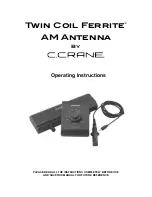
125
Section 6
GPS Receiver
Reference
Airspace—
Settings are selectable as Off, On or Air
On. When selecting Off, the airspace alerts are off all the
time. When selecting On, the airspace alerts are on all the
time. When selecting Air On, airspace alerts are only
presented when the unit is in the aircraft cradle. Air On is
set as the factory default setting or when choosing Restore
Defaults after pressing the
MENU
key. This setting also
affects whether the airspace warnings show up on the
Nearest Airspace tab.
Class B
is used to enable/disable alarms for Class B
or CTA (ICAO control areas) airspace.
Class C
is used to enable/disable alarms for Class C
or TMA (ICAO terminal control areas) airspace.
Tower Zone
provides an alarm within a 4.3 nm
radius from airports with control towers that are
not associated with Class B or Class C airspace.
(Typically Class D.)
Restricted
allows you to enable/disable alarms for
restricted areas.
MOAs
lets you enable/disable alarms for military
operations areas.
Other SUAs
provides alarms for other special-use
airspace categories including: training, caution,
danger, warning and alert areas.
Mode C
Veils provides an alarm within the outer 30
mile limit of an airspace as depicted on sectional
and IFR enroute charts where Mode C altitude-
reporting is required.
Altitude Buffer
expands the vertical range of an
airspace for a safety margin. For example, if the buffer is set
at 500 feet, and you are more than 500 feet above or below
an airspace, you will not be notified with an alert message.
If you are less than 500 feet from the floor/ceiling limits of
the airspace, you will be notified with an alert message.
The default setting for the altitude buffer is 200 feet.
You may enable/disable
the airspace alerts by
the individual
categories shown.
The altitude buffer
provides an added
margin of safety beyond
the floor/ceiling limits of
a given airspace.
















































